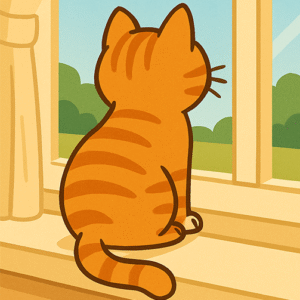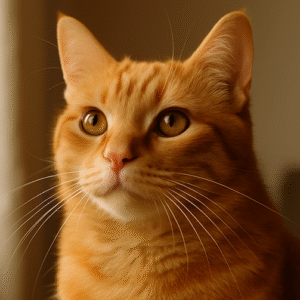Beyond the Lap
When you think of therapy animals, what comes to mind?
Most people picture golden retrievers in hospitals or Labradors guiding the blind. Dogs have long been the face of animal-assisted therapy. But what if cats with their gentle purrs, graceful presence, and quiet loyalty could play a similar role?
That’s the question researchers at Washington State University recently explored. And their findings might surprise you: cats could become powerful companions in therapeutic settings, offering comfort, healing, and connection in ways that are uniquely feline.
The Study That Started the Conversation
Researchers studied cats selectively bred or chosen for their sociability. These weren’t just ordinary house cats though many beloved pets share the same traits. These cats consistently sought out human attention, tolerated handling, and adapted well to new environments.
The scientists asked a simple but important question: if dogs can be trained to serve, guide, and comfort, could cats with their calmer energy provide a different but equally valuable kind of therapy?
The answer was a clear “yes.” These sociable cats demonstrated traits that make them excellent candidates for therapy work:
Affectionate behavior
leaning into pets and cuddles.
Tolerance for touch
staying calm even with frequent handling.
Emotional attunement
responding to human stress with purring or presence.
Why It Matters to Cat Lovers
For anyone who adores cats, this research feels like long-overdue recognition. Cats are often dismissed as aloof, but science is proving what cat lovers already know: felines have a remarkable capacity for connection.
Emotional Support, Cat Style
Dogs may run up with wagging tails, but cats offer something different quiet companionship. Their rhythmic purring has been shown to lower stress and even help regulate breathing. In therapy, this kind of calming presence can be invaluable for patients with anxiety, PTSD, or loneliness.
Accessibility for Cat-Centered People
Not everyone relates to dogs. Some people feel more at ease with cats, whose smaller size and gentle approach can feel less intimidating. Therapy cats could reach communities that are underserved by current animal-assisted programs.
Validation of the Human-Cat Bond
For cat owners, this study validates the comfort we feel when our cat curls up beside us after a hard day. That isn’t just coincidence it’s therapy in its purest form.
Cats vs. Dogs: Not Competition, but Complements
It’s important to note: cats are not meant to “replace” dogs in therapy. Instead, they can complement them. Dogs thrive in active, high-energy roles guiding, detecting, fetching. Cats, on the other hand, excel in spaces that require quiet, stillness, and subtle emotional support.
Imagine a hospital ward where patients can choose: a lively dog visit to boost energy, or a calming cat session to reduce stress. Each animal offers something distinct, and both enrich the healing environment.
Challenges and Questions
Of course, there are hurdles. Not all cats are suited to this work. Some may find busy environments overwhelming, while others might not enjoy being handled by strangers.
There are also practical concerns:
Allergies
many people are sensitive to cat dander.
Training
unlike dogs, cats require gentler, slower approaches to conditioning.
Welfare
therapy programs must ensure the cat’s well-being, avoiding overwork or stressful conditions.
But these challenges are not insurmountable. With careful breeding, thoughtful training, and proper safeguards, therapy cats could thrive.
A Cat Lover’s Perspective
Think about the moments your cat has comforted you curling up next to you when you were sick, sitting silently nearby when you were sad, or simply gazing at you with those wide, knowing eyes. Now imagine that same comfort extended to people in nursing homes, cancer wards, or mental health clinics.
Cats remind us that healing isn’t always loud or dramatic. Sometimes it’s the quiet presence of a warm body, the sound of a purr, or the gentle kneading of paws that brings peace.
Looking Ahead
This research opens the door to new possibilities. Programs could begin testing therapy cats in small settings perhaps pairing them with children learning to read, or seniors facing dementia.
If successful, cats might soon take their rightful place alongside dogs as recognized healers in the animal therapy world. For cat lovers, this isn’t just science catching up it’s a celebration of what we’ve always known in our hearts: cats heal.
Conclusion: The Healing Power of the Purr
The purr of a cat is more than a sound. It’s a vibration of comfort, a whisper of calm, a reminder that we are not alone.
Science is finally recognizing what cat lovers have always felt that our feline companions have the power to heal. And as therapy programs expand, the future may very well include more cats, sitting quietly beside those in need, offering peace one gentle purr at a time.



